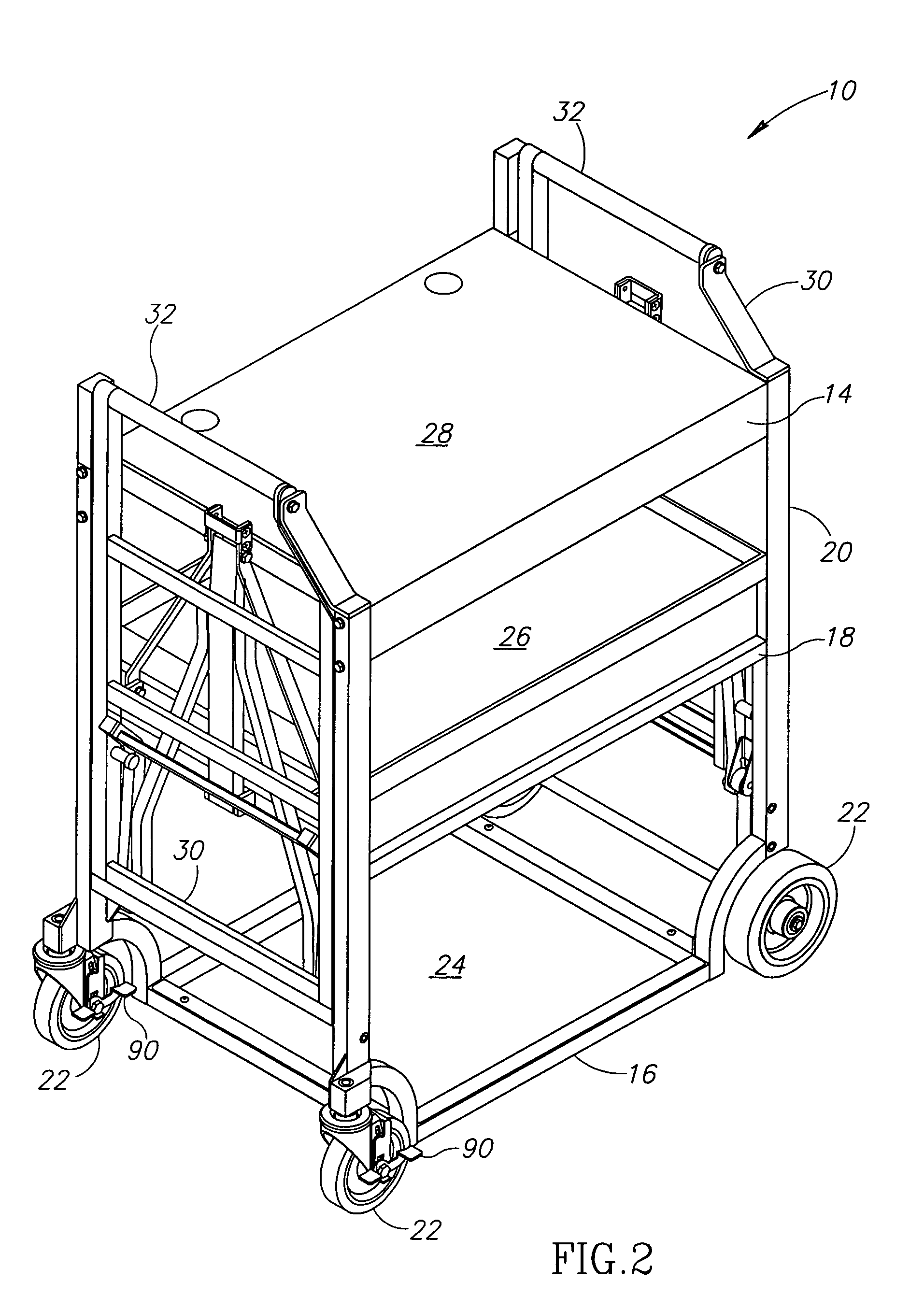Multiple link, self-jacking work cart wa002
a work cart and multi-link technology, applied in the direction of sledge wheels, work benches, shelves, etc., can solve the problems of reducing affecting the service life of the work cart, and causing the vibration of the work cart to become amplified, so as to and reduce the vibration of the work cart.
- Summary
- Abstract
- Description
- Claims
- Application Information
AI Technical Summary
Benefits of technology
Problems solved by technology
Method used
Image
Examples
Embodiment Construction
A multiple-linkage, self-jacking wheeled mobile work cart or cart in accordance with the principles of the invention is generally indicated at reference numeral 10 in the various Figures of the attached drawings, wherein numbered elements in the Figures correspond to like numbered elements herein. The cart 10 has a main body generally indicated at reference numeral 12 consisting of an upper portion 14, a lower portion 16 and an intermediate portion 18 interconnected by four vertical stanchions 20 at lateral edges of the main body which is supported by four rotating wheels 22. The lower portion preferably consists of a shelf 24 for placing tools or the like thereon, while the intermediate portion 18 preferably consists of a drawer 26 also adapted for accepting various hand tools. The upper portion 14 preferably incorporates a power tool base 28 adapted to receive a wide variety of power tools such as table saws, chop saws, drill presses, compound sliding miter saws and the like. As i...
PUM
 Login to View More
Login to View More Abstract
Description
Claims
Application Information
 Login to View More
Login to View More - R&D
- Intellectual Property
- Life Sciences
- Materials
- Tech Scout
- Unparalleled Data Quality
- Higher Quality Content
- 60% Fewer Hallucinations
Browse by: Latest US Patents, China's latest patents, Technical Efficacy Thesaurus, Application Domain, Technology Topic, Popular Technical Reports.
© 2025 PatSnap. All rights reserved.Legal|Privacy policy|Modern Slavery Act Transparency Statement|Sitemap|About US| Contact US: help@patsnap.com



